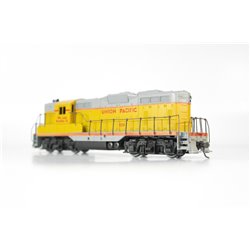When dry brushing, you might want to consider using an older brush, or a cheaper one at least, as it is going to...
No products
Product successfully added to your shopping cart
There are 0 items in your cart. There is 1 item in your cart.
Search Tips
Christmas and New Year
We are dispatching orders every weekday apart from Christmas Day, Boxing Day and New Year's Day.
If you order is time critical, select next day delivery at checkout.
The shop in Sandown is closed from 25th December, reopening on 30th December.
What is the difference between an EMD GP7 and an EMD GP9 locomotive?
The GP7 and GP9 are types of diesel-electric locomotives that were produced by the American locomotive manufacturer Electro-Motive Division (EMD). While they share some similarities, there are a few key differences between these two models:
Power output
The GP9 was designed to be more powerful than its predecessor, the GP7. The GP7 had a 16-cylinder 567C engine that produced 1,500 horsepower (1,119 kW), while the GP9 was equipped with a 16-cylinder 567D3A engine that generated 1,750 horsepower (1,305 kW). This increased power output made the GP9 more suitable for hauling heavier freight trains.
Weight
Due to its more powerful engine and additional components, the GP9 was slightly heavier than the GP7. A typical GP7 locomotive weighed around 123 tons (124.8 tonnes), while a GP9 weighed approximately 126 tons (128 tonnes).
Car body design
The GP9 featured a redesigned car body compared to the GP7. The most notable change was the introduction of a wider, more angular long hood to accommodate the larger 567D3A engine. Additionally, the GP9 had a longer and more streamlined appearance, with a more pronounced front nose and a wider cab.
Production years
The GP7 was produced by EMD from 1949 to 1954, with a total of about 2600 units built. On the other hand, the GP9 had a longer production run, being manufactured from 1954 to 1963, with more than 4000 units constructed.
The GP7 and GP9 locomotives were both widely used in the United States and Canada. However, their design and technological advancements influenced the development of subsequent diesel-electric locomotive models used in the UK and other parts of the world.
Click here to receive the tips weekly in your mailbox. You can unsubscribe at any time.








